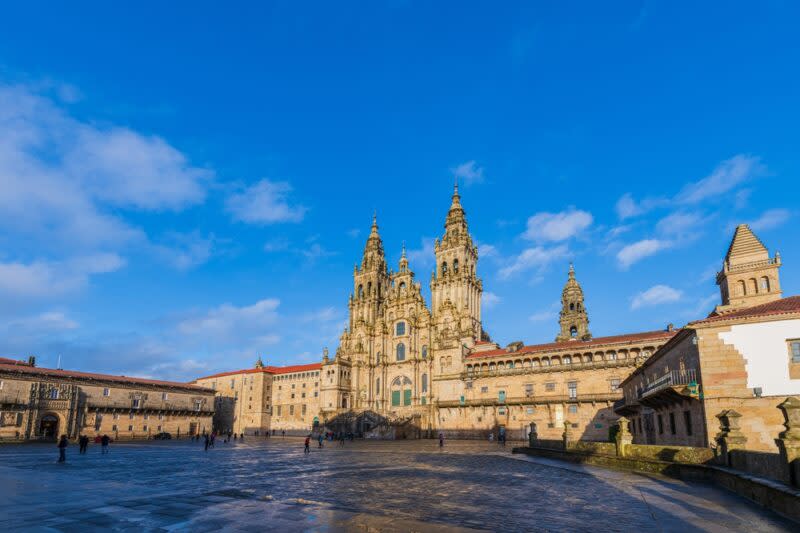Archaeologists have uncovered the bones of the ninth-century bishop who helped to create the Camino de Santiago. This makes him the oldest identified historical figure in Spain.
The remains were initially found in 1955 in a tomb in northwestern Spain. Multiple studies on the bones have thrown up hugely contradictory findings. The first concluded they belonged to an elderly male. Decades later, another study claimed they belonged to a woman over the age of 50. New analysis is much more specific. It suggests they belong to Bishop Teodomiro of Iria Flavia.
According to legend, Teodomiro discovered the tomb of St. James the Apostle in Santiago de Compostela. A hermit told him about a shower of bright stars; when Teodomiro went to investigate, he found the tomb. After St. James died in Jerusalem, two of his disciples purportedly took his remains to northwestern Spain.

Origin of the Camino de Santiago
When King Alfonso II heard of the discovery, he and his court marched from Oviedo to Santiago. In doing so, they created a 146km pilgrimage route that many still walk today. The Camino de Santiago is an extensive network of ancient pilgrim trails that stretch across Europe. All end at the tomb of St. James. King Alfonso II’s route is known as the Primitive Way.
“After St. James the Apostle, Bishop Teodomiro of Iria Flavia is the most important figure associated with the pilgrimage to Santiago de Compostela,” wrote the researchers. “He supposedly discovered the [Apostle’s] tomb after a divine revelation between 820 and 830 AD.”
The new analysis combined various methods to decipher who the bones belonged to. Carbon dating, isotope analysis, bone analysis, and DNA testing all point toward a male who died after the age of 45, had a weak build, and led a fairly sedentary lifestyle.
This might sound like thin evidence on which to attribute the remains to a specific person. However, when analyzed together, a picture starts to form. Until 1955, scholars debated whether a real Teodomiro even existed. Then the tomb containing the remains was discovered. The inscription on it read, “In this tomb rests the servant of God Teodomiro, Bishop of the See of Iria.”
Various studies on the remains then confused matters.


All clues point to the bishop
Now, radiocarbon dating proves the man within the tomb died around the same time as Teodomiro. Genetic analysis suggests that the person was related to the Roman, Visigoth, and Islamic populations of the Iberian Peninsula. The authors of the new study claim that this is “consistent with someone living in Spain 1,200 years ago”.
Lastly, the bone analysis points to a man who was relatively weak and not very physically active. Members of the clergy would have done very little manual labor in the ninth century, so all of this rings true.
Though no one will ever be able to prove that these remains belong to Teodomiro, the authors believe that there is a “98% probability” that they do.
The post It’s Him: Researchers ID the Bones of the Bishop Who Built the Camino de Santiago appeared first on Explorersweb.









